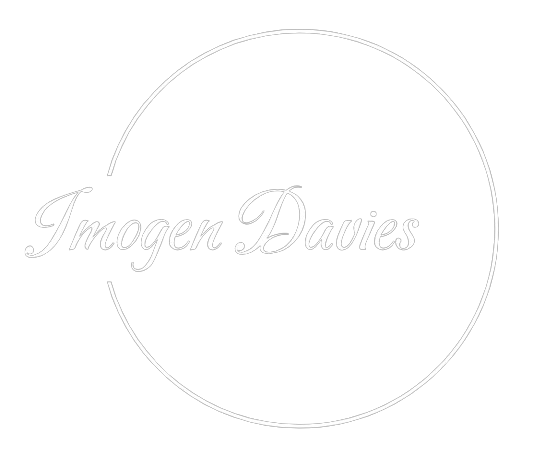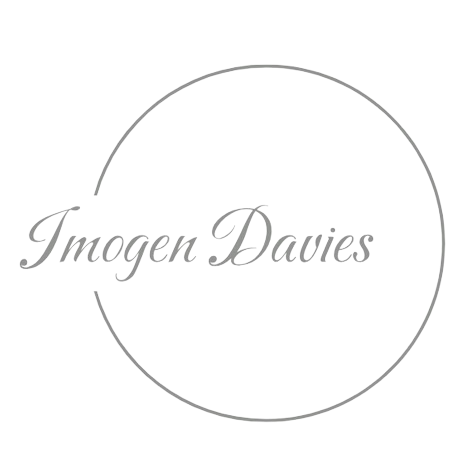Applying Nudge Theory to your marketing activity
As marketers, our job is to help our audience understand what we do and why they need our service or product, particularly over a competitor’s.
Now, however you like to think of the customer journey – messy middle vs. funnel etc. – one thing we can be certain of is that the bulk proportion of time throughout the journey will be spent in the Discovery and Research phases. Once they’ve got past those points and decided to give you a go, the time spent on the actual Conversion stage is much less by comparison, but this is where you most commonly see “Nudge Theory” in action as the final push to get them over the line.
But, if we can apply the same principles throughout the journey not just at the final stage, we’ll be able to help our audience reach a decision faster and can almost ‘control’ the path their journey takes.
What is Nudge Theory?
Nudge Theory was first introduced in 2008 by Richard Thaler and Cass Sunstein, where they defined nudges as a subtle change in the ‘choice architecture’ (i.e. the way in which choices are presented) to encourage shifts in behaviour, while the individual still maintains complete freedom and a sense of control over the decisions they make.
As marketers, we can use Nudge Theory to help shape the environment in which our audience needs to make decisions – from the Discovery phase right through to Conversion – without manipulating them into taking an action they otherwise may not have done.
Nudges vs. Sludges: The difference between persuasion and manipulation
Before we go any further, it is important to address the concept of nudges as they relate to persuasion and manipulation. Many ethical concerns have been raised about using nudges to guide a decision, for example Engelen & Schmidt explored the concerns that nudging impairs personal autonomy including worries such as freedom of choice where nudge policies try to improve people’s decisions by changing how options are presented to them, not the options themselves.
While there is a fine line between persuasion and manipulation, one of the best ways to differentiate them is to look at the intent behind the action (in this case, the nudge). Dr Paul Swets covered this in his 1986 book The Art of Talking So That People Will Listen, where he explained:
“Manipulation aims at control, not cooperation. It results in a win/lose situation. It does not consider the good of the other party. Persuasion is just the opposite. In contrast to the manipulator, the persuader seeks to enhance the self-esteem of the other party. The result is that people respond better because they are treated as responsible, self-directing individuals.”
Here we see that the intent, and the desired outcome, for persuasion is different to that of manipulation, and Thaler and Sunstein seemed to build on this by proposing four key ethical principles for “nudges for good”:
- The nudge should be transparent and never misleading.
- The original set of choices should remain available.
- It should be easy to opt out of the nudge (for example, in a single click).
- The behaviour being encouraged should improve the welfare of those being nudged.
If any of those principles are not met, they call it a “sludge” (or a “nudge for bad”) which is more in line with manipulative practices than it is persuasive, particularly with regard to the final point.
Taking a simplified view of it, we can effectively say that:
- Nudges = persuasive cues to help an individual make an informed decision, without restricting freedom of choice
- Sludges = manipulative cues designed to get the best outcome for the provider, regardless of the impact on the person
Examples of nudges in marketing
There are various ‘types’ of nudges you can apply to your marketing activity with some of the most frequently seen being:
Notification nudges
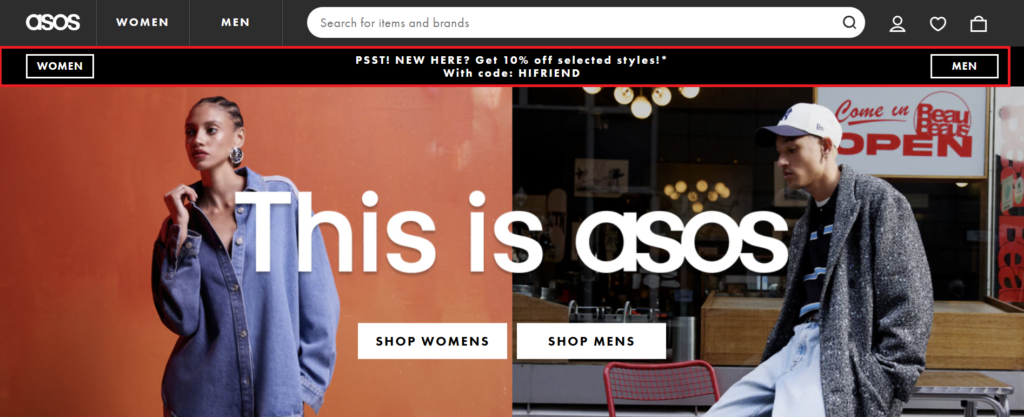
Notification nudges tend to appear at the top or bottom and can be used to:
- Highlight offers, e.g. discounts for signing up or for new users, or highlighting key sale messaging
- Show price drops on certain products or categories
- Demonstrate other people’s interest in the same product (e.g. “100 people have viewed this in the last hour”)
- Highlight a related service offering, e.g. an upcoming webinar
While these types of nudges are most often used by ecommerce businesses, they can work in service-based businesses as well. For example, just because you don’t sell “products” you could use notification nudges to offer a free consultation or let users know about your latest whitepaper.
In order for these to be effective, and in line with best practices, you’ll need to keep a few things in mind:
- Any notification that appears on your site should be easy to dismiss – just like popups, cookie banners, or other notifications you may receive on your device
- The notification itself should be persuasive, i.e. telling people what the benefit of clicking it would be – this could be a discount, early-access to an event, or a whitepaper you’re releasing
- The notification doesn’t interfere with the rest of the site – this has been best practice in SEO for many years (see Google’s notes on using interstitials) where any notification or alert that appears on the screen should not restrict usage of other elements
Social proofing & Reviews
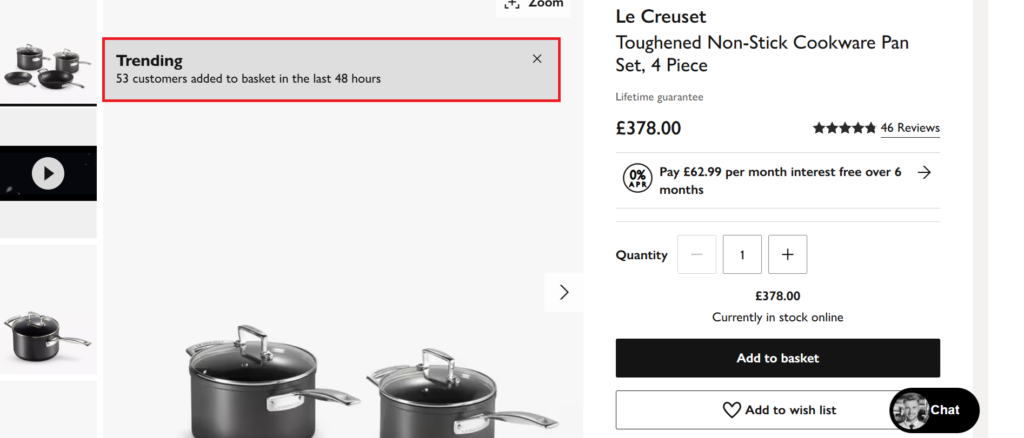
Social proofing nudges tend to appear over specific products as an overlay – either a badge or a dynamic banner – to highlight other people’s interest in the same product. This could be done through:
- Showing the number of people currently viewing the product
- Showing the number of times people save the product to a wishlist
- Showing the number of times the product has been added to baskets in the past hour
- Highlighting the number of times the product has been purchased in the last hour
These types of nudges are also frequently paired with review widgets as a secondary source of social proofing – for example, “90% of purchasers would recommend this product” or highlighting the 5-star reviews relevant to the product on the same page. As with notification nudges, these can also be used by service-based businesses to highlight customer experiences.
Social proofing nudges are designed to help provide additional confirmation for users that the purchase of a product is a good idea, so to make them effective you should be thinking about what would sway people in the right direction.
Upsells & Recommended Products
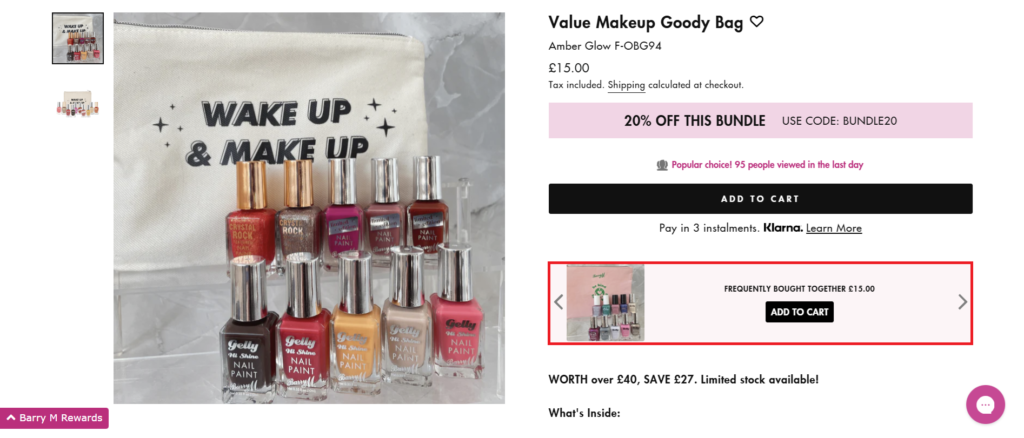
Upsell nudges are most commonly paired with recommended products and are designed to ultimately increase AOV.
These can come in a few different forms, including:
- Items that are “frequently bought together”
- Opportunity to claim a free gift or free delivery once the basket value reaches a certain level
- Items that other people viewed alongside the current product
Service-based businesses also take advantage of upsell nudges through things like offering no-obligation quotes or valuations when enquiring about a related service – for example, you’re looking to buy a new house and they offer a free valuation on your current property, or you save money if you instruct them for the surveys and complete the sale or purchase with them – or highlighting related services on the same page.
Anchoring
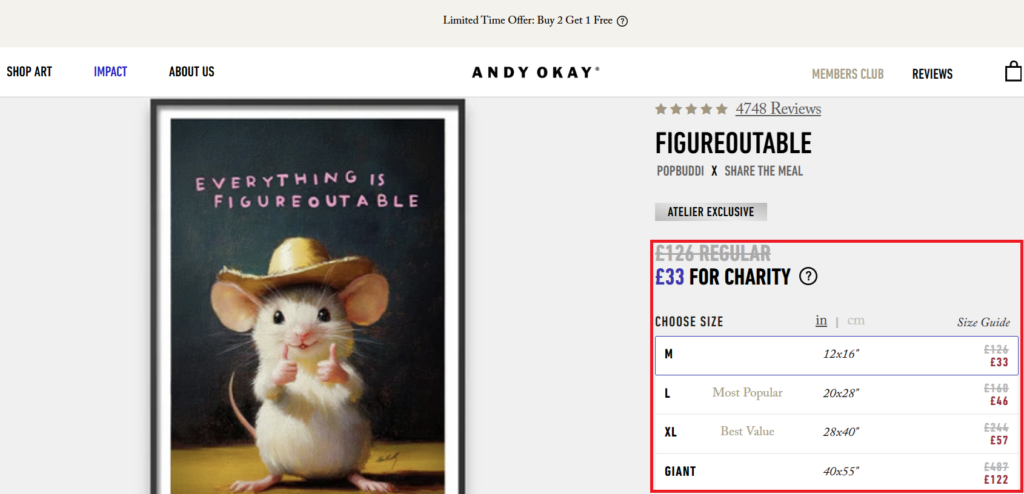
Anchoring nudges are a favourite among the ecommerce community, particularly around key sale periods such as Black Friday, Christmas, or Easter, and are used to provide an additional point of reference for the price.
These can come in a few different forms, including:
- Showing a before and after price, e.g. for items that are on sale, to highlight the savings compared to the standard price
- Tiered pricing, e.g. offering three different service levels, where you can position your preferred subscription level as the most value for money
- Price per unit, e.g. pet food suppliers will often show the price per 100g as a standardised comparison to other brands – these are often shown in a brand comparison table
While price anchoring, particularly in relation to deals, has certainly been proven to work time and time again, consumers might be becoming more sceptical about deals when they are presented like this especially around key sale periods. For example historically it has been believed that Black Friday is the time when the biggest savings are to be had on products, but in 2024 Which? found that 11% of the products analysed were actually cheaper in the six months before Black Friday, and in 2023 Which? found that only 2% of products analysed were at their cheapest on Black Friday itself.
Stats such as these may lead consumers to take offers around key sale periods with a pinch of salt, but rarely would it stop a person from making a purchase – money off is money off, right?
Other types of price anchoring, such as the tiered pricing models, can be incredibly effective at demonstrating value for money at a glance. A good example of this is Monday.com, where we can see the difference in pricing across four different tiers from Free to Pro:
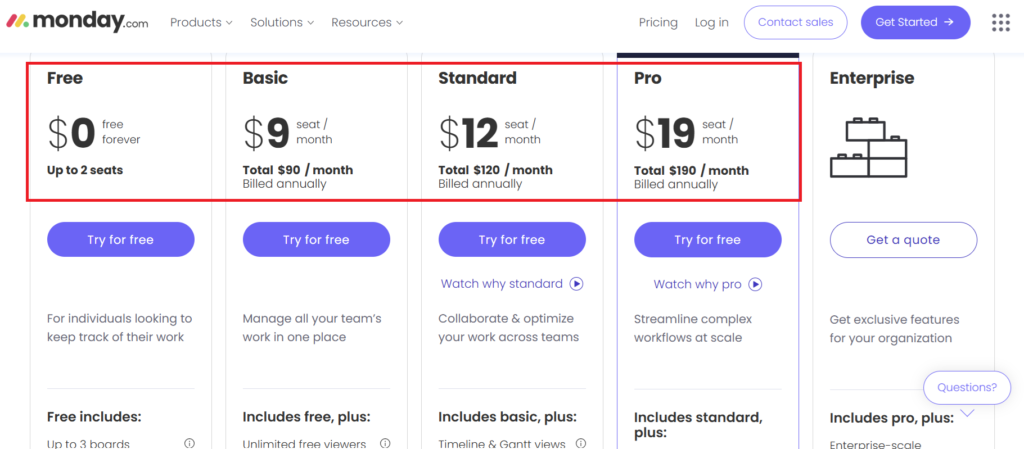
While the jump from $0 to $90 per month might seem like a big leap, positioning it as a “per seat” price of $9 makes it a lot more palatable and helps people rationalise it – the “Free” tier includes up to two seats, so by going to the “Basic” tier you’re adding at least one additional seat, at which point per person it works out to $3 per seat, or $30 per month – already sounds like a much better deal, right?
Now if you’re looking at the rest of the tiers by comparison, the difference between the Basic and Standard tiers feels like a bargain – for just an extra $30 per month, you get 6 more features that will help you manage and grow your business operations, that’s the cost of one extra person using the tool so why would you add a person to the Free tier to move to Basic, when you could move straight to Standard and get more value from the tool?
Price anchoring in these settings helps users rationalise the difference between service levels so for these to be effective you’ll want to position your price points in a way that clearly demonstrates value for money at each progressive level – going from Free to £200 per month is a massive leap for most people, but if you have an option of £100 or £150 per month there is suddenly less risk associated with the purchase and that becomes a more viable option than the highest level.
Scarcity
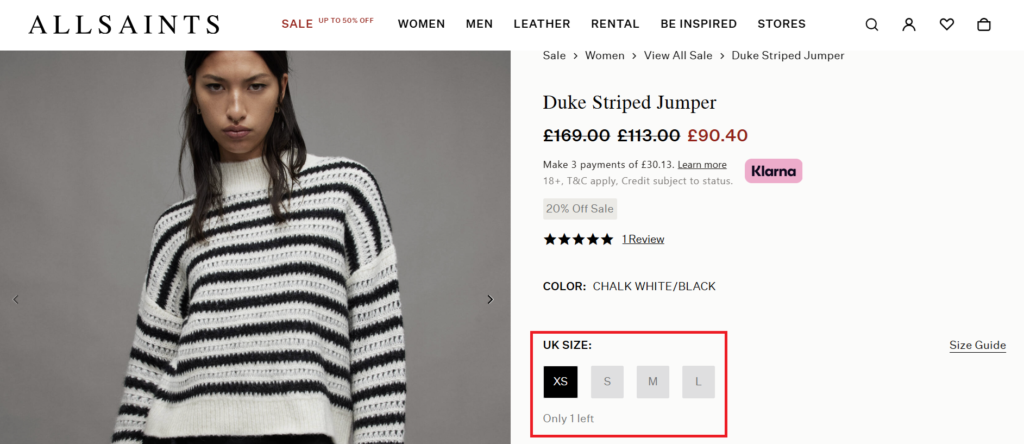
Scarcity nudges are incredible at making the final push for a sale – when used well, they invoke a level urgency for the customer, e.g. “If I don’t buy it now I may never be able to”.
These types of nudges are especially prominent when:
- Flash sales are on – massive price drops for a few hours
- Longer sales are running – progressive discounts over a week (e.g. “only two days left to claim your offer”)
- Limited stock is available (e.g. limited launches or end of line stock)
But they can also be used to hurry a purchase through even when ample stock is available, e.g. “We’ll hold it in the bag for an hour” by adding an element of time sensitivity.
These can be used across product, category, and basket pages on your website but if you’re using them in multiple places make sure they are consistent from page to page!
Using nudges earlier in the journey
All of the examples above show how nudges can be used on your website, but the same principles can be applied to different stages of your marketing activity:
- Notifications – have an app? Send push notifications about your offers or product launches
- Social proofing & Reviews – incorporate reviews across your ads and creative materials, or work with influencers to add a further element of social proof
- Upsells (recommended products) – bring groups of related products together in your visual ads or social content
- Anchoring – highlight price changes in title tags, meta descriptions, and ad copy
- Scarcity – highlight “limited stock remaining” messaging in titles, descriptions and creative
Just because nudges are most commonly used at the final point of conversion doesn’t mean that is the only place they are effective. The key is making sure they are present without becoming annoying – nobody wants a popup every 5 seconds with a different offer, or products recommended to them that just are not relevant to what they’ve been looking at previously – but if you can test different nudges at different times and then build a case based on data, you’re going to be onto a winning campaign.
Want to talk about how Behavioural Search can be factored into your existing digital marketing strategies?
